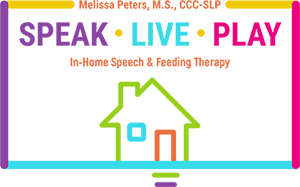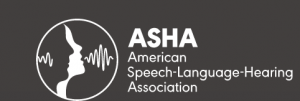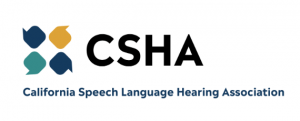Nurturing Children with Articulation Disorders
Communication is an inherently vital aspect of human interaction. However, developmental challenges can hinder some children’s ability to articulate their thoughts and ideas effectively. It is imperative to take a strategic approach in addressing speech sound disorders, ensuring that essential skills are built step by step. This exploration will delve into the fundamental building blocks crucial for fostering articulate and intelligible speech in children with articulation disorders. By employing a proactive and systematic approach, we can empower these children to overcome their speech sound disorders and cultivate effective communication skills. Let’s embark on this journey together as we shed light on the significance of speech sound disorders and the techniques for nurturing clear and coherent speech in children with articulation disorders.
Understanding the Challenge: Speech Sound Disorders
Children with speech sound disorders, or articulation disorders, may face difficulties in expressing themselves through speech and communication. This is because speaking involves a complex process that demands precise motor skills, a good understanding of language rules, and a quick ability to turn thoughts into words. Hence, it is important to identify these problems as the first step in helping children with speech sound disorders. We can use various methods, such as speech therapy and specific exercises, to help children overcome these challenges and improve their speech and communication skills. We’re also on a mission to spread the word and help children with articulation disorders thrive in an all-embracing space where they can blossom and unleash their boundless potential! Let’s make a difference together.
Establishing Foundations: A Simple-to-Complex Approach
It is crucial to adopt a gradual progression from simplicity to complexity to facilitate the development of articulate speech in children. This approach ensures that their language skills are nurtured effectively, enabling them to express themselves clearly and confidently. This involves focusing on practicing single words and gradually advancing to combining multiple words. Following this systematic progression makes children less likely to be overwhelmed with information, which helps establish a solid foundation for future speech development.
Speech sound disorders, encompassing articulation and phonological disorders, pose challenges for children in accurately producing speech sounds. To address these disorders, working with children in an active voice is important, as well as using transitional words to help them progress from simple to complex speech patterns. By doing so, children can develop the skills they need to communicate effectively with others.
When working with children with speech sound disorders, it is important to use various techniques to help them improve their speech. This might include using games, songs, and other activities to help children practice their speech sounds. Additionally, it’s important to use a variety of approaches to help children learn, including visual aids, repetition, and other techniques.
Practical Practice: Words in Context
Developing articulate speech, starting with a simple-to-complex approach, is important to help children with speech sound disorders, such as articulation and phonological disorders. This involves focusing on practicing single words and gradually advancing to combining multiple words. Following this systematic progression makes children less likely to be overwhelmed with information, which helps establish a solid foundation for future speech development.
To make the practice of articulating words engaging, it’s important to select words related to a child’s interests, favorite activities, or familiar people. Incorporating elements that resonate with the child’s world makes learning enjoyable and meaningful. This approach can help maintain motivation and lead to sustained progress.
When working with children with speech sound disorders, it’s important to use various techniques to help them improve their speech. This might include using games, songs, and other activities to help children practice their speech sounds. Additionally, it is important to use a variety of approaches to help children learn, including visual aids, repetition, and other techniques.
Utility in Expression: Words for Real-Life Situations
Effective communication relies heavily on practicality, especially in real-life situations that impose specific speech-related challenges on your child. Having a repertoire of words about their immediate environment facilitates their ability to navigate these situations. Additionally, words such as “want,” “help,” “move,” “bye,” “up,” and “down” can serve as pivot words, connecting with other words to form useful phrases. By incorporating these words into their practice, children with speech sound disorders can establish a solid foundation for building their language skills.
Cognitive Engagement: Mastering “Wh” Questions
To engage in meaningful conversations, it is crucial to understand and respond to “wh” questions. These questions, which include who, what, where, when, and why, are fundamental in communication. Children can internalize the underlying concepts by building practice blocks around these questions, preparing them to handle diverse communication scenarios.
Some children may encounter challenges in developing proper speech sounds, resulting in speech sound disorders like articulation and phonological disorders. Learn more about speech sound disorders and how to address them in children. These disorders can make it challenging for children to pronounce specific words or produce certain sounds of consonants or vowels.
Therefore, it is important to identify and address speech sound disorders early on. Children with speech sound disorders may struggle with pronouncing certain words or producing specific consonant or vowel sounds. It is crucial to identify and address these disorders at an early stage. Speech therapy plays an important part in helping children develop effective communication skills.
Understanding and responding to “wh” questions is crucial in communication. Nevertheless, certain children may encounter speech sound disorders, including articulation and phonological disorders, which can hinder their ability to communicate proficiently.
Expert Guidance: Seeking Professional Help
If you navigate the complexities of articulation disorders, seeking expert guidance is invaluable. Speak Live Play offers consultations to provide tailored assistance for children with speech sound disorders. Feel free to reach out for specialist support in nurturing your child’s communication skills.
In fostering a child’s speech development, these building blocks serve as a roadmap, guiding parents and caregivers in creating a supportive environment for children with articulation disorders.





